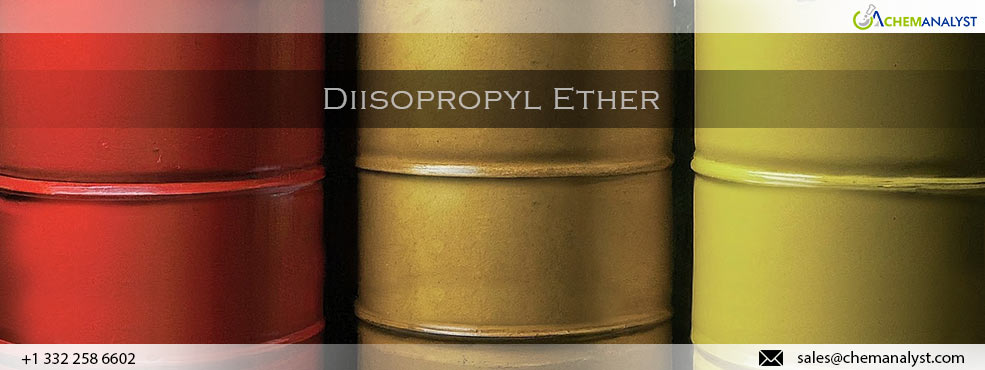Diisopropyl Ether Prices Stable Amid Feeble Demand and Manufacturing Slump in China
- 02-Sep-2024 3:17 PM
- Journalist: Nicholas Seifield
The market for Diisopropyl Ether (DIPE) in China has remained notably stable throughout August, despite a backdrop of weak demand and significant challenges in downstream industries. This stability contrasts sharply with the broader economic indicators, which suggest a period of contraction and uncertainty in the manufacturing sector. Trading activity in the DIPE market was sluggish, with weak shipments from producers. Additionally, the reduced cost of the primary raw material, isopropyl alcohol, also impacted the DIPE market.
According to the ChemAnalyst data, DIPE prices held steady in August 2024, with no significant fluctuations observed in the Chinese market. This stability comes amidst a complex market environment characterized by weak downstream industries such solvent and degreasing agent and an overarching slowdown in economic activity which reduced consumption of DIPE.
The National Bureau of Statistics (NBS) reported a notable decline in the construction sector, with the sector’s index dropping to 50.6 points in August from 51.2 points in July. This decline reflects a contraction in construction activity, which traditionally drives demand for various chemical products to clean construction equipment’s, including DIPE.
The construction sector’s decline is attributed to several factors, including high temperatures and frequent rainstorms which have hampered construction activities across the region. Additionally, the current period is recognized as a production off-season for several industries, which has further contributed to the overall decrease in industrial activity which declined the demand for DIPE.
The manufacturing sector, a critical driver of demand for industrial chemicals, has also shown signs of weakening. According to the NBS, both production levels and new orders experienced a dip in August. The production and new orders indices declined, indicating reduced output and slower order intake across various manufacturing sectors. In addition, the raw material inventory index fell to 47.6 percent, marking a 0.2 percentage point decline, which indicates a decrease in the inventory of major raw materials. Further, the production index decreased to 49.8 percent, down by 0.3 percentage points from the previous month, signaling a slowdown in production activities.
In response to the declining demand and reduced order volumes, manufacturers have reported that both new domestic orders and new export orders remained firmly in negative territory. The sustained weak demand has led to a cautious approach among manufacturers, who have been hesitant to expand production or increase hiring. Consequently, many manufacturers have imposed hiring freezes as they navigate the challenging market conditions.
Despite these broader economic pressures, the DIPE market in China has not seen a significant impact on pricing. The stability in DIPE prices may be attributed to a well-balanced supply and demand dynamic in the short term. Current supply levels for DIPE are reported to be sufficient, mitigating the potential for significant price fluctuations despite the weak demand in the downstream sectors.



